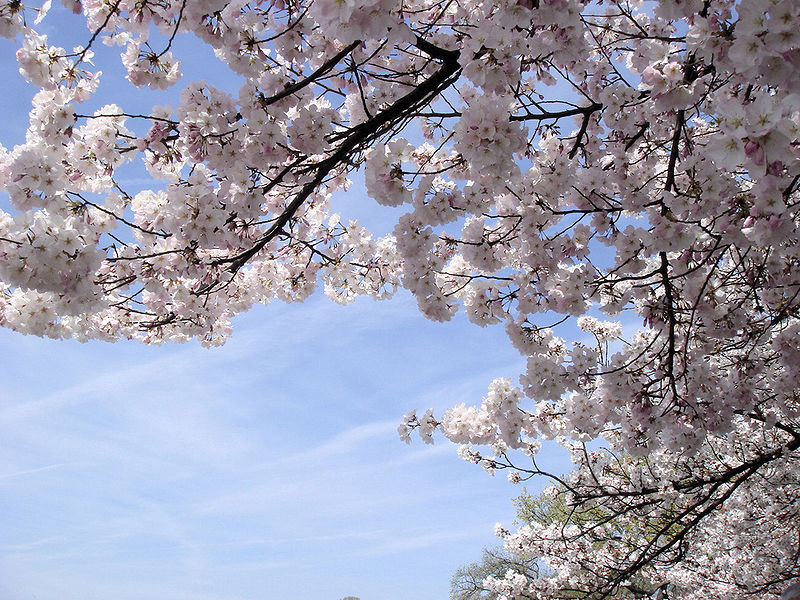 In a ceremony on March 27, 1912, First Lady Helen Herron Taft and Viscountess Chinda, wife of the Japanese ambassador, planted the first two of these trees on the north bank of the Tidal Basin in West Potomac Park. By 1915, the United States government had responded with a gift of flowering dogwood trees to the people of Japan.[2] In 1927, a group of American school children re-enacted the initial planting; the first festival was held in 1935, sponsored by civic groups in the nation's capital. Suspended during World War II because of hostilities between the United States and the Empire of Japan, the festival resumed in 1947 with the support of the Washington, D.C. Board of Trade and the D.C. Commissioners. In 1948, the Cherry Blossom Princess and U.S. Cherry Blossom Queen program were started by the National Conference of State Societies.
In a ceremony on March 27, 1912, First Lady Helen Herron Taft and Viscountess Chinda, wife of the Japanese ambassador, planted the first two of these trees on the north bank of the Tidal Basin in West Potomac Park. By 1915, the United States government had responded with a gift of flowering dogwood trees to the people of Japan.[2] In 1927, a group of American school children re-enacted the initial planting; the first festival was held in 1935, sponsored by civic groups in the nation's capital. Suspended during World War II because of hostilities between the United States and the Empire of Japan, the festival resumed in 1947 with the support of the Washington, D.C. Board of Trade and the D.C. Commissioners. In 1948, the Cherry Blossom Princess and U.S. Cherry Blossom Queen program were started by the National Conference of State Societies.Later, 3,800 more trees were accepted in 1965 by First Lady Lady Bird Johnson. In 1981, the cycle of giving came full circle. Japanese horticulturalists came to take cuttings from the trees in Washington, D.C. to replace Yoshino cherry trees in Japan that had been destroyed in a flood. With this return gift, the trees again fulfilled their roles as a symbol and agent of friendship. The most recent event in this cycle occurred in the fall of 1999. It involved the formal planting in the Tidal Basin of a new generation of cuttings from a famous Japanese cherry tree in Gifu Prefecture reputed to be over 1,500 years old.
A Close up of one of the Cherry Trees in Full Bloom.
In 1994 the Festival was expanded to two weeks to accommodate the many activities that happen during the trees' blooming.[3] Today the National Cherry Blossom Festival is coordinated by the National Cherry Blossom Festival, Inc., an umbrella organization consisting of representatives of business, civic, and governmental organizations. More than 700,000 people visit Washington each year to admire the blossoming cherry trees that herald the beginning of spring in the nation's capital.
The two-week festival is kicked off with an opening ceremony, followed by an array of activities and cultural events. Every day there is a sushi/sake celebration, classes about cherry blossoms, and a bike tour of the Tidal Basin. Other events include art exhibits (photography, sculpture, animation), cultural performances, rakugo, kimono fashion shows, dance, singing, martial arts, merchant-sponsored events, and a rugby union tournament.
The Cherry Blossom 10-Mile Run is held as part of the festival on the first Sunday in April. Because the festival must be planned long in advance, it sometimes fails to be celebrated during the peak of the cherry blooms. On the last Saturday of the festival, there is the National Cherry Blossom Festival Parade, followed by the Sakura Matsuri-Japanese Street Festival, a celebration of Japan presented by the Japan-America Society of Washington, D.C.






0 komentar Anda:
Post a Comment
Tinggalkan komenatar anda....